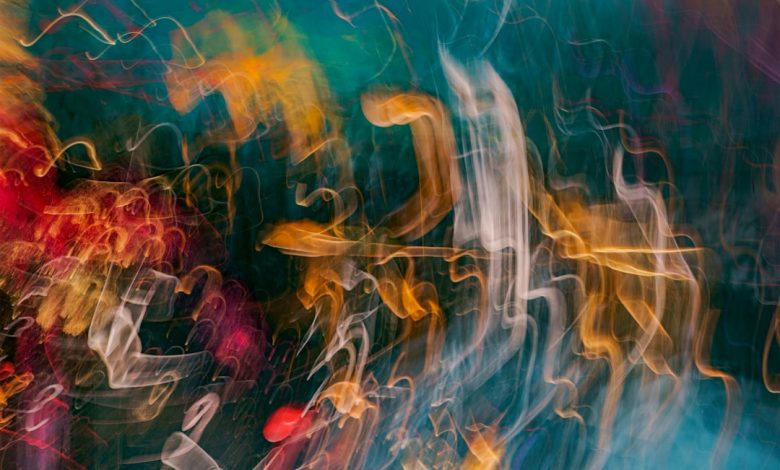Unlocking Creativity: The Power of Creative AI

Creative AI refers to the intersection of artificial intelligence and the creative arts, encompassing a range of technologies that enable machines to generate, assist, or enhance creative outputs. This field has gained significant traction in recent years, driven by advancements in machine learning, neural networks, and natural language processing. At its core, Creative AI leverages algorithms to analyze vast datasets, learning patterns and styles that can be replicated or innovated upon.
For instance, AI systems can now compose music, generate visual art, write poetry, and even create compelling narratives, all while mimicking human creativity. The evolution of Creative AI has been marked by notable milestones, such as the development of generative adversarial networks (GANs), which allow machines to create new content by pitting two neural networks against each other. One network generates content while the other evaluates it, leading to increasingly sophisticated outputs.
This technology has been instrumental in producing artworks that challenge traditional notions of authorship and creativity. As AI continues to evolve, it raises questions about the nature of creativity itself and whether machines can truly be considered artists or merely tools for human expression.
Key Takeaways
- Creative AI refers to the use of artificial intelligence to generate original and innovative content in various creative fields.
- Creative AI has the potential to revolutionize art and design by automating repetitive tasks and generating new ideas and concepts.
- Creative AI can be applied in various industries such as marketing, fashion, and entertainment to streamline processes and enhance creativity.
- Ethical considerations of Creative AI include issues of copyright, ownership, and the potential impact on human creativity and employment.
- Creative AI is revolutionizing the creative process by enabling artists and designers to explore new possibilities and push the boundaries of their work.
The Impact of Creative AI on Art and Design
The influence of Creative AI on art and design is profound, reshaping how artists conceptualize and produce their work. Artists are increasingly using AI as a collaborative partner, employing algorithms to generate ideas or enhance their creative processes. For example, artists like Refik Anadol utilize AI to create immersive installations that blend data visualization with artistic expression.
By processing large datasets, these installations transform information into dynamic visual experiences that engage audiences in novel ways. This fusion of technology and creativity not only expands the boundaries of artistic expression but also invites viewers to reconsider their relationship with art. Moreover, Creative AI has democratized access to artistic tools, enabling individuals without formal training to engage in creative endeavors.
Platforms like DALL-E and Midjourney allow users to generate images from textual descriptions, making it possible for anyone to create visually striking content with minimal effort. This accessibility has led to a surge in user-generated art, fostering a vibrant online community where creativity flourishes. However, this shift also raises questions about the value of traditional artistic skills and the implications of mass-produced art in a digital landscape.
Exploring the Potential of Creative AI in Various Industries
Creative AI’s potential extends far beyond the realm of art and design; it is making significant inroads into various industries, including advertising, entertainment, fashion, and gaming. In advertising, for instance, AI-driven tools can analyze consumer behavior and preferences to create personalized marketing campaigns. Companies like Persado utilize AI to generate compelling copy that resonates with target audiences, optimizing engagement and conversion rates.
By harnessing the power of data analytics and machine learning, businesses can craft messages that are not only creative but also strategically aligned with consumer interests. In the entertainment industry, Creative AI is revolutionizing content creation. Streaming platforms like Netflix employ algorithms to analyze viewer preferences and recommend content tailored to individual tastes.
Additionally, AI is being used to script television shows and movies, with projects like “Sunspring,” a short film written entirely by an AI named Benjamin. This experiment showcased the potential for machines to contribute to storytelling in innovative ways, prompting discussions about the future of screenwriting and narrative development. As Creative AI continues to evolve, its applications across various sectors will likely expand, leading to new forms of collaboration between humans and machines.
Ethical Considerations of Creative AI
As Creative AI becomes more integrated into artistic and commercial practices, ethical considerations surrounding its use are increasingly coming to the forefront. One major concern is the question of authorship: if an AI generates a piece of art or music, who owns the rights to that creation? This dilemma complicates traditional notions of intellectual property and raises legal questions that have yet to be fully addressed.
For instance, when an artist uses an AI tool to create a painting, is the resulting work a product of the artist’s creativity or the machine’s algorithmic processes? The ambiguity surrounding authorship necessitates a reevaluation of existing copyright laws. Another ethical consideration involves the potential for bias in AI-generated content.
Since AI systems learn from existing datasets, they may inadvertently perpetuate stereotypes or reinforce societal biases present in the data. For example, if an AI is trained on a dataset that predominantly features artworks from a specific demographic, it may produce outputs that reflect those biases rather than a diverse range of perspectives. This issue highlights the importance of curating training datasets carefully and ensuring that diverse voices are represented in the creative process.
As Creative AI continues to develop, addressing these ethical challenges will be crucial for fostering a responsible and inclusive creative landscape.
How Creative AI is Revolutionizing the Creative Process
Creative AI is fundamentally transforming the creative process by introducing new methodologies and tools that enhance human creativity. One significant way this transformation occurs is through the automation of repetitive tasks, allowing artists and designers to focus on higher-level conceptual work. For instance, graphic designers can use AI-powered software to generate variations of design elements quickly, enabling them to explore multiple creative directions without being bogged down by manual adjustments.
This efficiency not only accelerates project timelines but also encourages experimentation and innovation. Furthermore, Creative AI serves as a source of inspiration for artists across disciplines. By analyzing vast amounts of existing work, AI can identify trends and suggest novel combinations that may not have been considered otherwise.
For example, musicians can use AI tools like AIVA (Artificial Intelligence Virtual Artist) to compose original scores based on specific genres or moods. These tools can generate melodies or harmonies that artists can then refine or build upon, effectively acting as a collaborative partner in the creative process. This synergy between human intuition and machine-generated ideas fosters an environment where creativity can flourish in unprecedented ways.
The Role of Human Collaboration in Creative AI
Despite the impressive capabilities of Creative AI, human collaboration remains essential in harnessing its full potential. While machines can generate content based on learned patterns, they lack the emotional depth and contextual understanding that humans bring to creative endeavors. The most successful applications of Creative AI often involve a partnership between human creators and AI systems, where each complements the other’s strengths.
For instance, in fashion design, brands like Adidas have begun using AI to analyze consumer trends and preferences while relying on human designers to interpret those insights creatively. Moreover, human input is crucial in guiding the ethical use of Creative AI technologies. As creators engage with these tools, they must remain vigilant about the implications of their work and strive for inclusivity and diversity in their outputs.
By actively participating in the development and application of Creative AI, artists can ensure that their unique perspectives shape the direction of this technology rather than allowing it to operate in isolation. This collaborative approach not only enriches the creative process but also fosters a sense of accountability among creators as they navigate the complexities of working alongside intelligent systems.
Overcoming Challenges in Implementing Creative AI
Implementing Creative AI presents several challenges that organizations must address to fully leverage its capabilities. One significant hurdle is the need for technical expertise; many creatives may lack the necessary skills to effectively utilize AI tools in their work. To bridge this gap, educational initiatives focused on integrating technology into creative curricula are essential.
Workshops and training programs can empower artists and designers with the knowledge needed to navigate AI technologies confidently. Additionally, there are concerns regarding data privacy and security when using AI systems that rely on large datasets for training purposes. Organizations must ensure that they comply with data protection regulations while also being transparent about how they collect and use data.
Establishing clear guidelines for ethical data usage will be vital in building trust among users and stakeholders as Creative AI continues to evolve.
The Future of Creative AI: Trends and Developments
Looking ahead, the future of Creative AI is poised for exciting developments as technology continues to advance at a rapid pace. One emerging trend is the integration of augmented reality (AR) and virtual reality (VR) with Creative AI applications. These technologies offer immersive experiences that can enhance storytelling and artistic expression in ways previously unimaginable.
For example, artists may create interactive installations where viewers can engage with AI-generated content through AR interfaces, blurring the lines between physical and digital art. Another promising direction involves the refinement of generative models that produce increasingly sophisticated outputs across various mediums. As researchers continue to improve algorithms and expand training datasets, we can expect more nuanced and contextually aware creations from AI systems.
This evolution will likely lead to new forms of collaboration between humans and machines, where both parties contribute uniquely to the creative process. In conclusion, as Creative AI continues to develop and integrate into various aspects of society, it will undoubtedly reshape our understanding of creativity itself while presenting both opportunities and challenges for artists and industries alike. The ongoing dialogue surrounding its ethical implications will be crucial in ensuring that this technology serves as a force for good in fostering innovation and inclusivity within the creative landscape.
If you are interested in exploring the intersection of technology and creativity, you may also enjoy reading about A/B testing tips for success. This article provides valuable insights into how businesses can use data-driven experimentation to optimize their marketing strategies and improve user experience. Check it out here.
FAQs
What is Creative AI?
Creative AI refers to the use of artificial intelligence to generate or assist in the creation of artistic content such as music, visual art, literature, and more.
How does Creative AI work?
Creative AI works by using algorithms and machine learning techniques to analyze and understand patterns in existing creative works, and then generate new content based on these patterns.
What are some examples of Creative AI applications?
Examples of Creative AI applications include music composition algorithms, image and video generation, storytelling and narrative generation, and even the creation of virtual characters and worlds.
What are the benefits of Creative AI?
The benefits of Creative AI include the ability to assist artists and creators in generating new ideas and content, automating repetitive tasks, and exploring new creative possibilities that may not have been possible before.
What are the limitations of Creative AI?
Limitations of Creative AI include the challenge of creating truly original and innovative content, as well as the ethical considerations surrounding the use of AI in creative fields.
How is Creative AI being used in the real world?
Creative AI is being used in various industries such as music production, advertising, gaming, and design to streamline creative processes, generate new content, and enhance user experiences.







